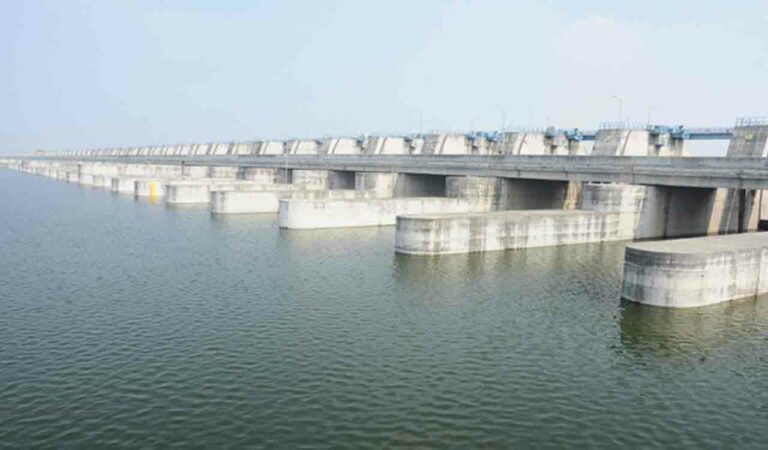They perceived that the report had been “hastily compiled under pressure” from powers-that-be to give a political colour, while overlooking key submissions by the state.
Updated On – 10:26 PM, Fri – 3 November 23

Hyderabad: The National Dam Safety Authority’s (NDSA) findings on the Medigadda barrage‘s structural issues have drawn sharp criticism from irrigation experts and Telangana State Irrigation Department sources.
They perceived that the report had been “hastily compiled under pressure” from powers-that-be to give a political colour, while overlooking key submissions by the state.
Despite the state providing comprehensive data on 17 out of the 20 points requested by the NDSA, their data points were not included in the preparation of the report, sources disclosed.
The release of the NDSA’s findings to the media, even before the report was sent to the department officials concerned, has raised many an eyebrow among official circles. They suspected that it was a deliberate attempt to give a political dimension to the Medigadda episode aimed at discrediting the State Government and the world-renowned project.
Furthermore, officials were incredulous as the report assigned the sinking of the piers of the barrage to a multitude of causes, including planning, design, quality control, and maintenance failures.
State officials point out that the Medigadda barrage, an integral part of the Kaleshwaram Lift Irrigation Scheme (KLIS), was engineered by the Central Designs Organisation’s seasoned professionals, each boasting over four decades of expertise.
The barrage designs conformed to established standards set forth by the Central Water Commission (CWC), the Central Board of Irrigation and Power (CBIP), and the Bureau of Indian Standards’ IS codes. Endorsements of these designs came after rigorous consultations with CWC design experts and further evaluations of the Tapovan project under CWC guidance.
In many barrages constructed in India after independence, ‘Raft foundations’ were used and the codes and manuals for such foundations were released by Central organisations only. Though there were instances of sinking of piers of Prakasam Barrage constructed across river Krishna and Sir Arthur Cotton Barrage across river Godavari, Irrigation department officials in the united Andhra Pradesh managed to repair them successfully, they pointed out.
The experts asserted that the rafts and the ‘cutoff’ walls of the barrage were built as per the Indian Standard codes (IS Codes) laid down for civil engineering. Picking up holes in the barrage’s designs would amount to finding fault with the design manuals and codes issued by the central organisations themselves.
They stressed that the raft foundation model was opted for in several of the barrages built in the post-independence era and all the design codes and manuals are issued only by the Central Organisations.
Not an isolated case
The sagging of the Medigadda barrage piers was not an isolated case. The pillar sinking was reported in the Farakka barrage built over River Ganga, Sir Arthur Cotton Dam on Godavari and Prakasham Barrage on Krishna. The engineers in the undivided state could address the issues effectively for rehabilitating the projects concerned.
Responding to the quality aspects pointed out by the NDSA, the barrage was built by the L&T which was known for the quality and standards in the works executed by it. The project was implemented by the organisation under the supervision of engineering experts.
Moreover, the Kaleshwaram Project report was prepared by the WAPCOS, a central government organisation and the final approval was given for it by the Technical Advisory Committee (TAC) of Ministry of Jal Shakti after fully ascertaining the accuracy of all key aspects pertaining to hydrology, irrigation planning, estimates, designs and the inter-state issues involved.
Many of the CWC officials including the CWC chairman had visited the project site when the works were being executed and the way all of them lauded the implementation of the project was still fresh in the memory of the people, it was pointed out.
The official of the NDSA also felt that the sagging of piers could be because of the changes that occurred in the soils of the riverbed beneath the barrage structure. Neither the government nor the engineers concerned would desire such things to occur and it is unfortunate, they argued.



